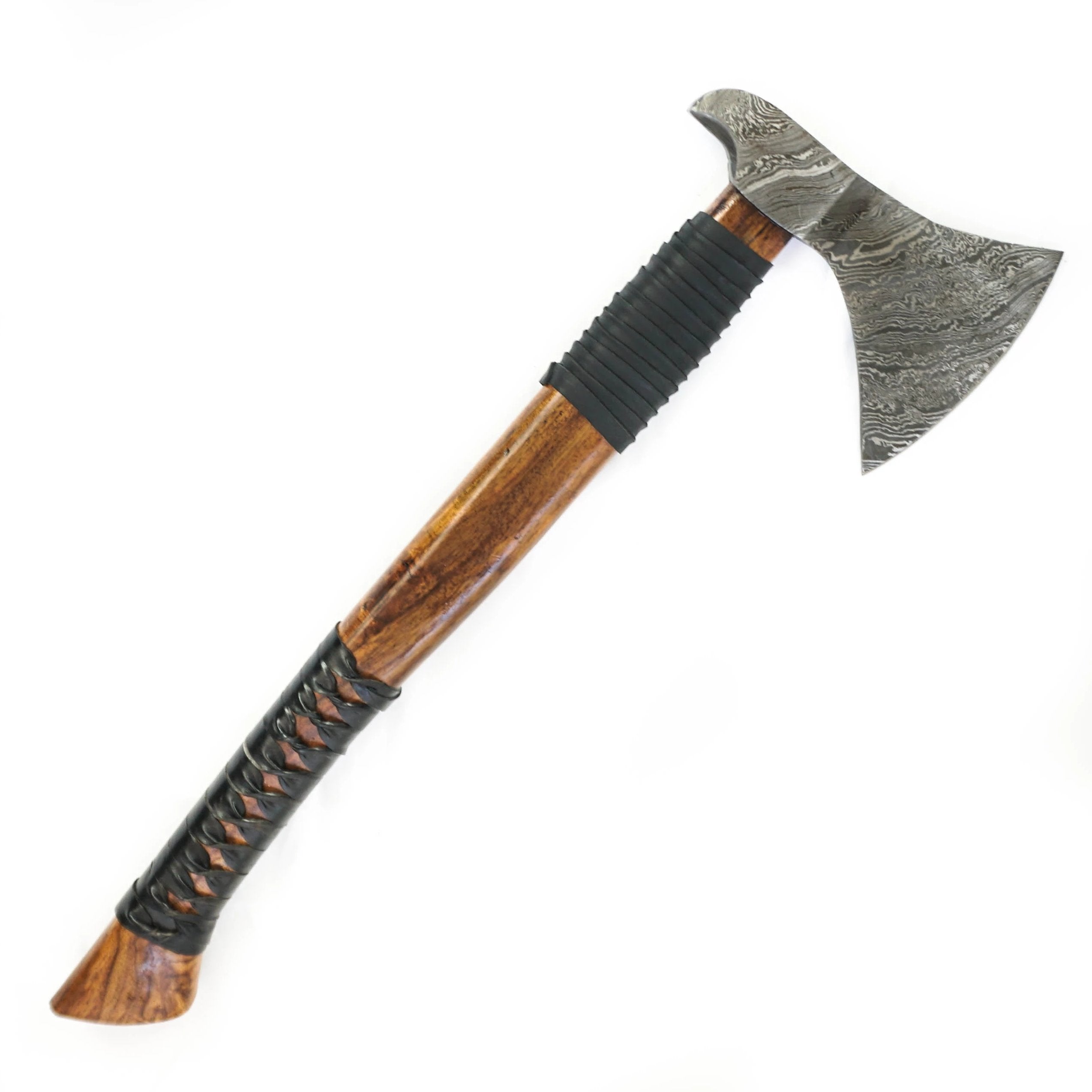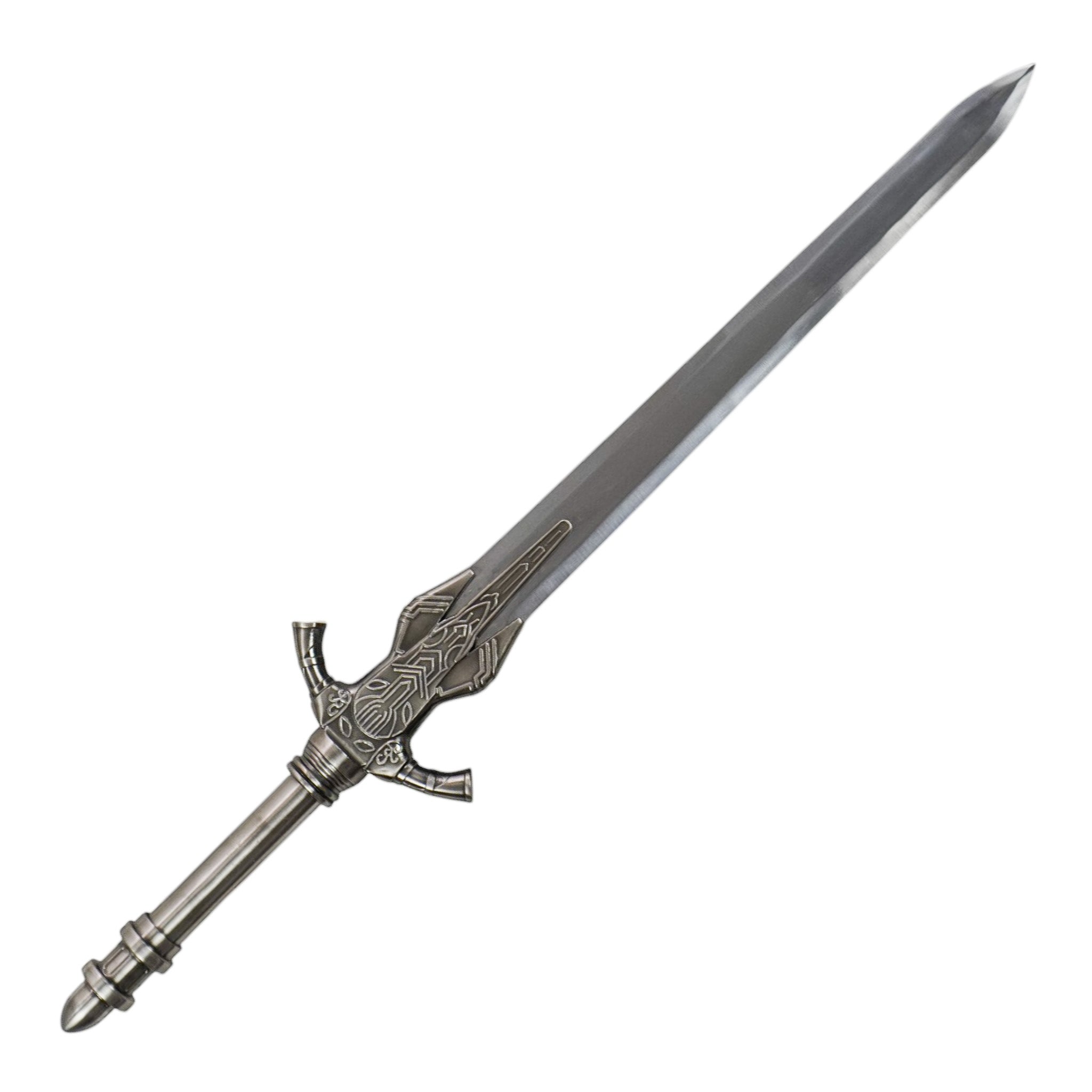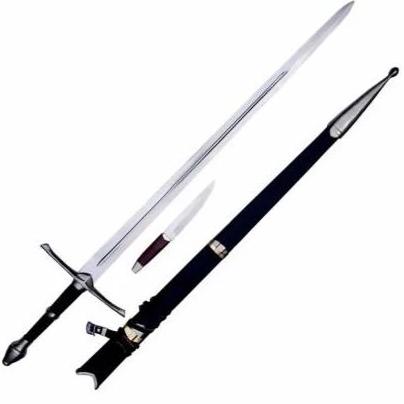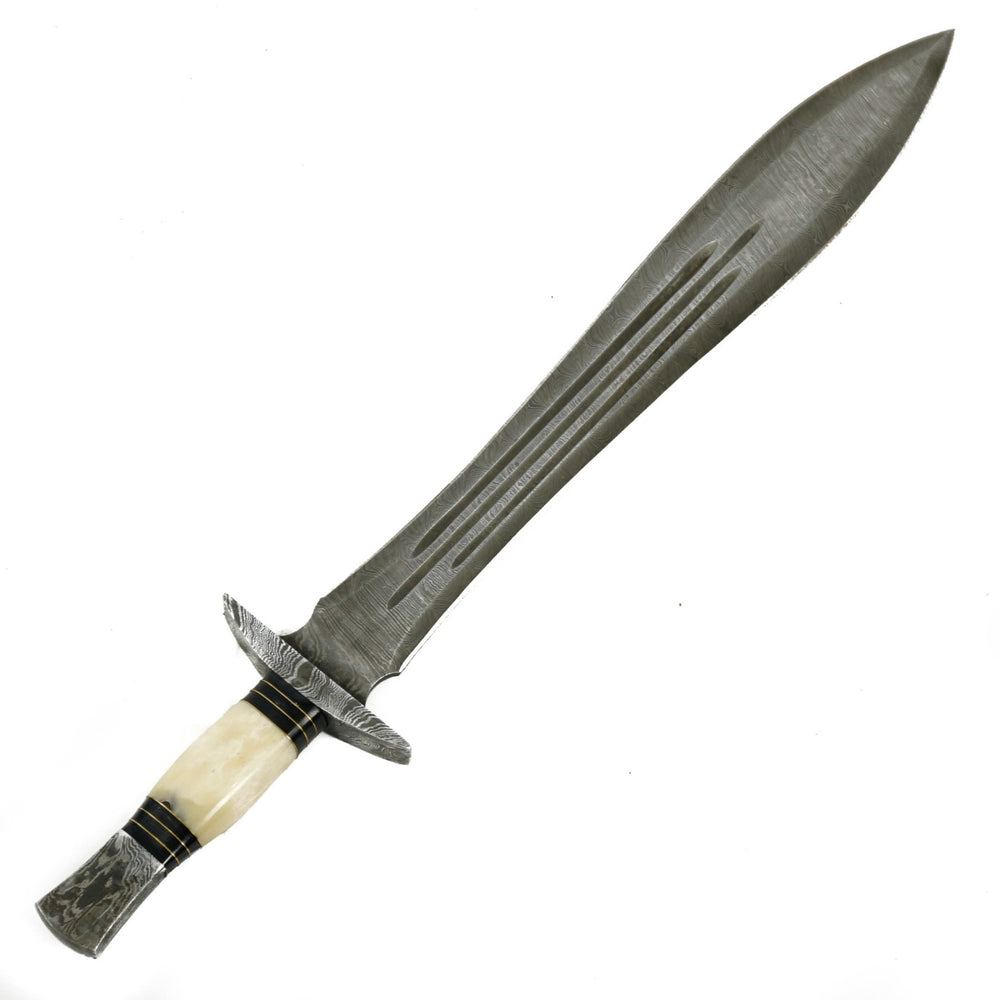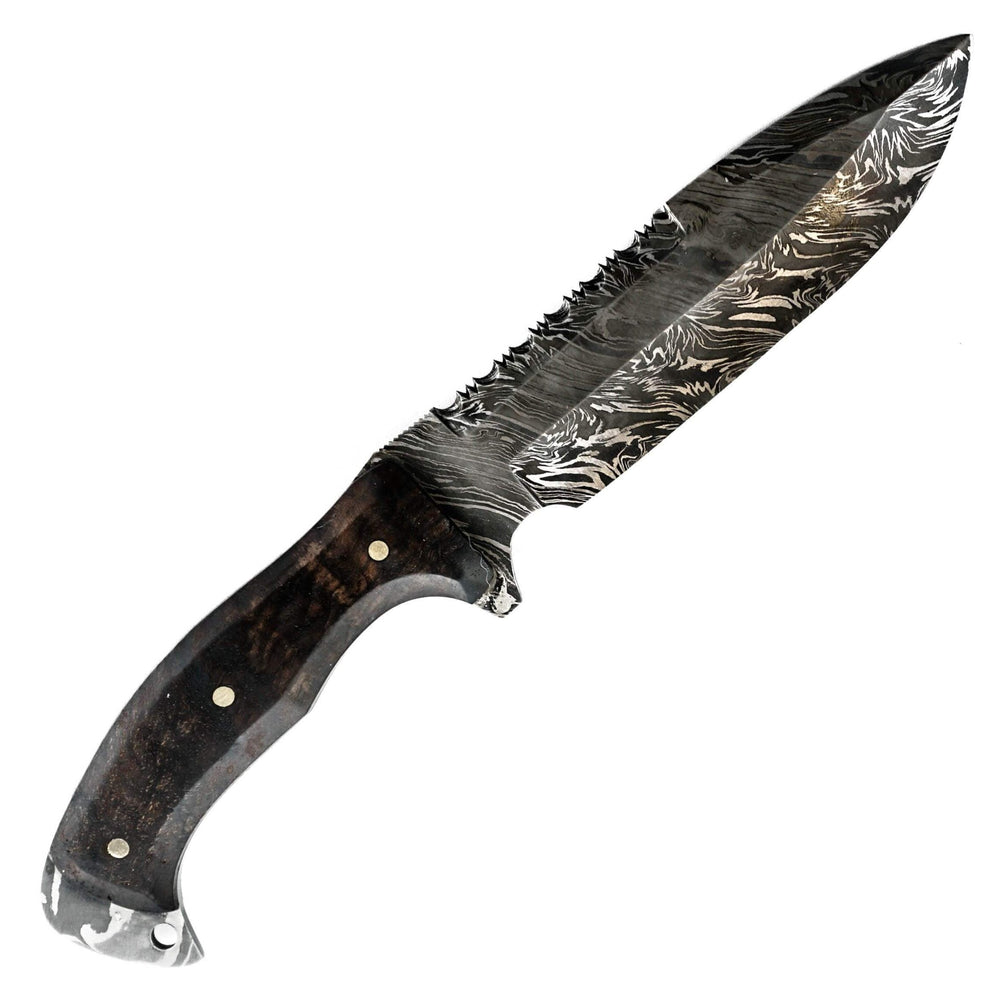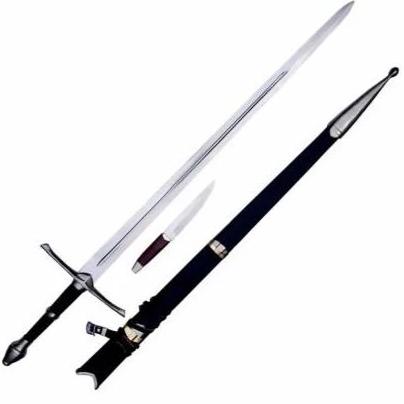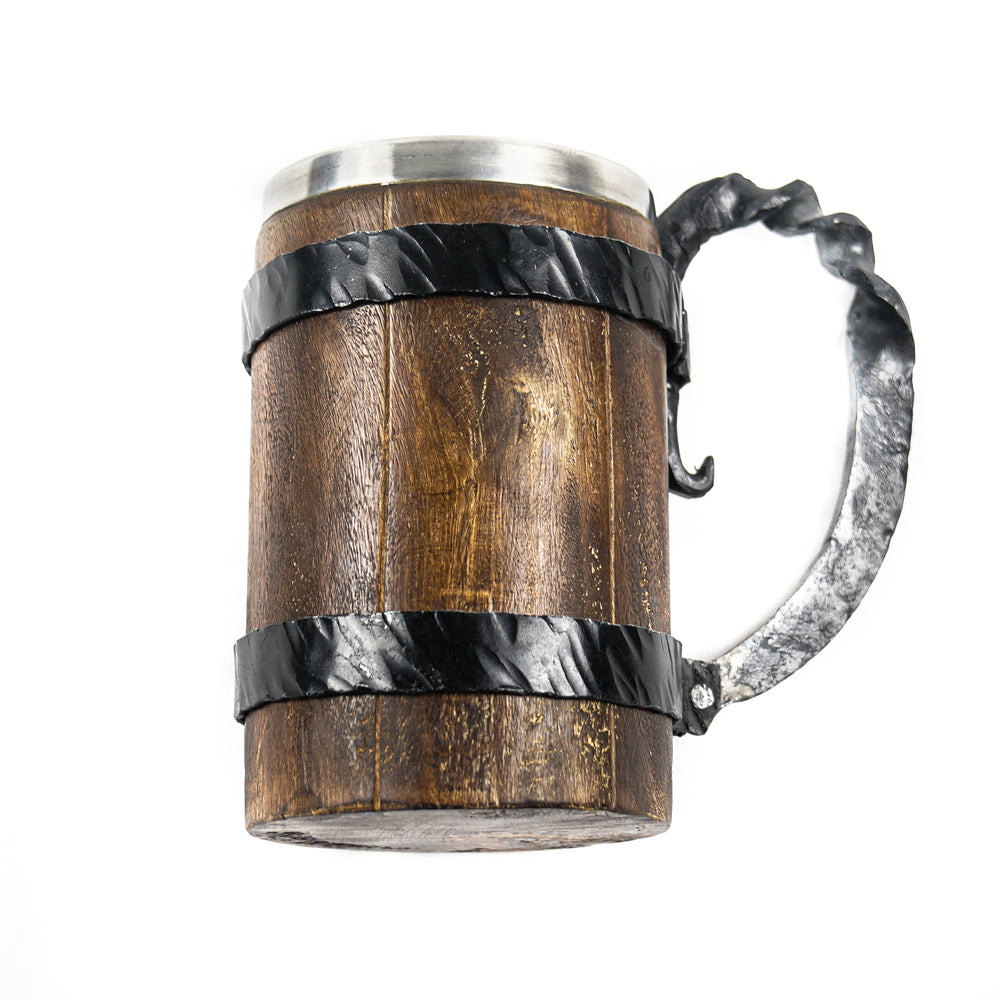Top 10 Deadliest Medieval Weapons Of The Middle Ages
The Middle Ages saw some of the most devastating bloodsheds in human history. The medieval weaponry used during this period had the power to deliver a swift and often fatal blow. From spears and swords to poleaxes and maces, medieval warriors were armed with an incredible array of deadly instruments.
Today's thrilling post explores the top 10 deadliest medieval weapons of this dark era. So prepare yourself as we dive into history!
The Sword

Description And Characteristics
The sword was a weapon that could be wielded with one or two hands. It had a long, straight blade and a hilt that was sometimes adorned with jewels or carved with intricate designs. The sword's weight varied depending on its size. But it was typically made of iron or steel with a sharp edge designed for slicing or stabbing.
Historical Significance
The sword was one of the quintessential weapons of medieval knights and played an essential role in shaping history. Knight armor went to battle with swords, and the weapon was often seen as a symbol of power and prestige. Many legendary tales have been written about swords, i.e., the famed Excalibur wielded by the legendary British king, Arthur.
Deadly Effectiveness
A sword's sharpness and durability made it an incredibly dangerous weapon. A properly trained swordsman could inflict fatal wounds with one swift stroke.
Additionally, the sword was useful for keeping enemies at bay because of its length and range. It was an ideal weapon for close combat and could be used on horseback or foot.
Variations And Types
From the Katana sword to the dagger, many variations of the sword emerged during the medieval period. The Katana sword was a large, heavy weapon designed for cutting through Armor. While the dagger sword was a thinner, more elegant weapon primarily used for thrusting.
Swords were often categorized according to their region, such as the Japanese katana or the European knight armor sword. The two-handed sword became popular in the late medieval period, allowing for reach and striking power. While sacrificing some of the weapon's versatility.
Regardless of its variations, the sword remains a symbol of the medieval warrior and a testament to the period's enduring legacy.
Visit Battling Blades to choose from various swords available.

The Ax
Description And Characteristics
The ax is a single-handed weapon with a blade head attached perpendicularly to a wooden shaft. Its length varies from short enough for throwing to long enough for use as a two-handed weapon. The blade's shape can range from a broad, flat edge to a narrow, pointed edge. Axes can also have a spike on their reverse side to provide even more versatility.
Historical Significance
Axes were used throughout the medieval period and were favored by foot and horseback soldiers. They cause severe damage, particularly against Armor or helmets, which could be divided with larger, two-handed battle axes. Axes were also effective for cleaving through shields or punching through gaps in intricate formations of enemy soldiers.
Lethal Power
The destructive power of an ax is immense due to its ability to crush and slice through its targets simultaneously. Axes could cut through limbs or decapitate an opponent in a single strike. The axe was equally effective against armored or unarmored opponents thanks to its weight and strength.
Variations And Types
Numerous axes have been used throughout medieval history, varying in shape and size. Broad, battle, hand, double axe, and throwing axes were popular during this time. War hammers, a variation on the ax, were also used by soldiers and knights. Axes with spiked reverse sides or serrated blades were used for specialized purposes. Different regions and cultures at the time also had unique axes variations.
The Spear
Description And Characteristics
The spear, also known as a lance, is a long weapon commonly used by the middle age armor. It was typically made of wood with a pointed metal tip. And its length could range from six to nine feet, depending on its intended purpose. The spear has a thin shaft that is easy to maneuver. Moreover, its sharp and pointed end makes it an ideal weapon for thrusting and piercing.
Historical Significance
The spear played a significant role in many battles throughout history, particularly during the middle ages. Infantry soldiers and medieval knight armors used it, and its effectiveness made it a favorite among soldiers.
It was also accessible to poorer soldiers who could not afford more expensive weapons such as swords or Armor. The spear was particularly useful against armored opponents since it could pierce through gaps in their Armor.
Versatile And Deadly
The spear's versatility made it a valuable weapon on the battlefield. Its length allowed the user to keep their distance from their opponent while still being able to inflict damage.
It could also be used for throwing and striking, making it an essential tool for infantry soldiers and cavalry. The spear's deadliness was confirmed by its effectiveness in battles. Because many soldiers feared it due to its ability to kill with one thrust.
Variations And Types
The spear had many variations and types, each with its unique purpose. The most common kinds of spear were the pike, used by units of soldiers.
They used to form a wall of spears against cavalry charges and the halberd. It is a combination of an ax and a spear commonly used by foot soldiers. The throwing spear was a type of spear that was designed for throwing and often used in hunting.
The Longbow
Description And Characteristics
The Longbow is a powerful and deadly tool that is tall and has a wide range. It is constructed using strong and flexible woods like yew wood, which provides it with its high draw weight.
It requires incredible strength and skill to draw and hold the Longbow in position and fire it correctly. The traditional Longbow's arrow soars through the air with lethal accuracy, making it a potent weapon on the battlefield.
Historical Significance
The Longbow significantly impacted the medieval battlefield. And the English longbowmen became famous for mastering the weapon during the Hundred Years War. The Battle of Agincourt was a good example of the weapon's effectiveness.
The English Longbow wielded by archers was the principal weapon of the English army, making it a battlefield equalizer. And it is a weapon that could be used at range, making it useful in almost any situation.
Feared Weapon Of English Archers
The Longbow was a feared weapon on the battlefield. A team of English archers could strike fear into their opponents. They unleashed a volley of deadly arrows with incredible accuracy and skill. The Longbow's range extended beyond any other contemporary weapon, and it could fire hands capable of penetrating heavy Armor.
Lethal Accuracy
The deadly power of Longbow was unleashed when its arrow soared through the air with lethal accuracy. The Longbow's combination of strength and accuracy, coupled with the Archer's ability to fire several arrows in succession quickly.
The Longbow remains the deadliest weapon in the medieval arsenal, with its strength and accuracy on the battlefield.

The Crossbow
Description And Characteristics
The crossbow consisted of a bow mounted on a stock or frame. And it was operated by a trigger, the mechanism that released the bowstring, propelling the arrow forward at high speeds. It was a game-changer in medieval warfare, allowing infantrymen to take down armored knights from a safe distance.
Historical Significance
The crossbow played a significant role in numerous battles and campaigns throughout the Middle Ages. Both sides used it in the Hundred Years' War and were present at the Battle of Agincourt. Moreover, English archers armed with longbows and crossbows won a decisive victory over the French.
Feared Weapon Of English Archers
The crossbow's immense power caused significant fear among the enemy ranks and became a symbol of terror on the battlefield. English archers armed with longbows and crossbows won a decisive victory over the French at the Battle of Agincourt.
Lethal Accuracy
The crossbow had lethal accuracy, and its bolts could have pierced Armor and inflicted fatal injuries on opposing soldiers. Different variations and types of crossbows were used in the Middle Ages, including the arbalest and the siege crossbow. These weapons could deliver bolts faster and shoot bolts at great distances with heavy draw weights.
The Mace
Description And Characteristics
The mace was a brutal medieval weapon with a heavy spiked head attached to a wooden or metal shaft. Unlike swords or other bladed spears, the mace was designed to deliver crushing blows rather than slicing and cutting. The weight and momentum of the mace allowed it to penetrate Armor and inflict serious damage on its target.
Historical Significance
Mace was widespread throughout the Middle Ages, particularly during the 14th and 15th centuries. It was a favorite weapon of knights and foot soldiers, as it could be used on horseback and foot.
The mace was especially effective against heavily armored opponents, as the force of the blows could dent or even fracture plate armor. Some knights would even ride into battle, wielding a mace in one hand and a sword in the other. As it allowed them to switch between weapons depending on the circumstances.
Crushing Blow
The crushing blow delivered by the mace was physically devastating and psychologically intimidating. A mace-striking armor or flesh could be heard from a distance, striking fear into enemies' hearts.
Moreover, the spikes on some versions of the mace could even become lodged in Armor. This made it difficult for opponents to extricate themselves from the weapon's deadly embrace.
Variations And Types
The mace came in many forms, from small, one-handed versions to massive two-handed models requiring great strength.
Some had spikes or flanges, and some had chains attached to the shaft that could wrap around an enemy's weapons. Several cultures developed their variations of the mace, including the Indian guru and the Persian shishpar.

The War Hammer
Description And Characteristics
The war hammer was a medieval weapon in middle ages designed for one purpose only - to deliver a crushing blow. It typically consisted of a strong wooden shaft, which could be one or two-handed, and a heavy metal head.
Additionally, the head made of iron or steel, features a flat surface on one side and a pointed end on the other. This design allowed the war hammer to deliver both concussive and piercing damage.
Historical Significance
The war hammer first appeared on the medieval battlefield during the 14th century. And it quickly became a favored weapon of knights and other armored soldiers. Its effectiveness against plate armor was undeniable, as it could easily dent, crack, or pierce it.
Some historical accounts mention war hammers causing internal bleeding or brain damage to their targets, even with the Armor intact.
Powerful Strike
The war hammer's striking power came from its weight and momentum. Unlike swords or axes that required the wielder to slice or chop, the war hammer was all about impact.
A skilled warrior could use the weapon to bash a shield, crush a helmet, or disable a limb with a single blow.
Moreover, Its pointed end allowed for targeted strikes, such as the Armor's joints or the opponent's face.
Variations And Types
As with many medieval weapons, the war hammer had several variations and types. Some had longer or shorter shafts, depending on the wielder's preferences or circumstances.
Others featured different shapes or sizes of the hammerhead. Because a spike or a flat surface with multiple points suits various combat situations.
Some war hammers had symbolic elements, i.e., intricate designs or religious motifs, to reflect the owner's status or beliefs.
Learn more about the Weapons of War: the War Hammer.
The Poleaxe
Description And Characteristics
The Poleaxe is a formidable weapon that consists of a long shaft with an ax head on one end and a spike or hammer on the other.
However, the ax head is typically curved and sharpened on both sides. While the point or hammer is designed for piercing plate armor or crushing helmets. The Poleaxe is a heavy weapon made from iron or steel, usually weighing 4 to 8 pounds.
Historical Significance
The Poleaxe was widely used in medieval battles and was favored by knights. Also, other armored warriors used it due to its versatility and effectiveness against heavily armored opponents. It played a significant role in many famous battles, including the Battle of Crécy and the Battle of Agincourt.
Multi-purpose Weapon
The Poleaxe was an incredibly versatile weapon that could be used for cutting and thrusting. Its ax head was effective for chopping, while its spike was ideal for piercing Armor or delivering a devastating blow.
The Poleaxe was also used to dismount knights from their horses or break through enemy formations.
Variations And Types
There were several variations of the Poleaxe, including the bec de corbin, which had a long spike at the top of the ax head. And the lucerne hammer had a sharp tip for piercing Armor, and a hammerhead for crushing helmets.
Also, had different types of heads, such as the rondel and the crescent, which were designed for thrusting and slashing.
The Flail

Description And Characteristics
The flail is a medieval weapon that consists of a spiked ball or cylinder connected to a handle by a chain or rope. The weapon was designed to be an effective tool for close combat, primarily to inflict damage on an enemy's body.
Its unique design allows the user to attack from unpredictable angles, making it an effective tool for surprise attacks.
Historical Significance
The flail was a popular weapon throughout the Middle Ages, especially in Eastern Europe and Russia. Knight armors and warriors often used it due to its deadly effectiveness in combat.
Despite its notoriety, the flail was somewhat controversial due to its unpredictability. And the fact that it was often associated with desperate, ruthless acts of violence.
Unpredictable But Deadly
One of the reasons why the flail was such a fearsome weapon was its unpredictable nature. Because of the chain that connected the ball to the handle, the user could swing the weapon from various angles and catch an enemy off guard.
Additionally, the spiked ball on the end of the flail could cause grievous wounds to an enemy's body. And because of this, it became a formidable weapon on the battlefield.
Variations And Types
Over time, the flail evolved into many different variations, each with its design and purpose. For example, the "morning star" was a flail variation featuring a spiked ball with longer spikes piercing the thickest Armor.
Another popular type was the "three-section staff," a flail with three spiked balls connected by a chain or rope.
Lances
Description And Characteristics
Lances were long, metal-tipped weapons made from hardwood or bamboo, covered in metal plating for durability. The metal tip was sharpened to a fine edge for piercing Armor. Lances were wielded by knights or cavalry.
And they were designed to deliver a powerful blow to an opponent from a distance. Over time, lances evolved to include specialized types such as the couched lance, lance-ax, and halberd.
Historical Significance
One of the main historical significances of the lance was its role in jousting tournaments during the Middle Ages. Knights honed their skills with the lance to participate in these events. Lances were also prominent medieval weaponry in warfare.
Feared Weapon Of English Archers
Despite its effectiveness as a weapon, lances were unpredictable and dangerous. Due to their length and weight, making them difficult to handle. They were also feared by English archers, who relied on longbows. Because lances could easily penetrate Armor and cause devastating injuries.
Lethal Accuracy
Lances were known for their lethal accuracy when wielded by skilled warriors. The couched lance was especially effective when charging on horseback, delivering a powerful blow to the opponent. However, if the lance missed its target, it could continue on its trajectory and strike an unintended victim.

Closing Thoughts
The Middle Ages was a time of brutal conflict that saw numerous deadly medieval knight weapons employed on the battlefield. From the iconic swords and spears to the less commonly known poleaxes and maces. Medieval warriors utilized a vast and diverse array of weapons to deadly effect.
We have uncovered the top 10 deadliest medieval weapons of this gruesome era, delving into history, uses, and striking power. Whether you're a history buff or fascinated by the macabre. Join us as we journey back in time and explore medieval weaponry's violent yet fascinating world.

